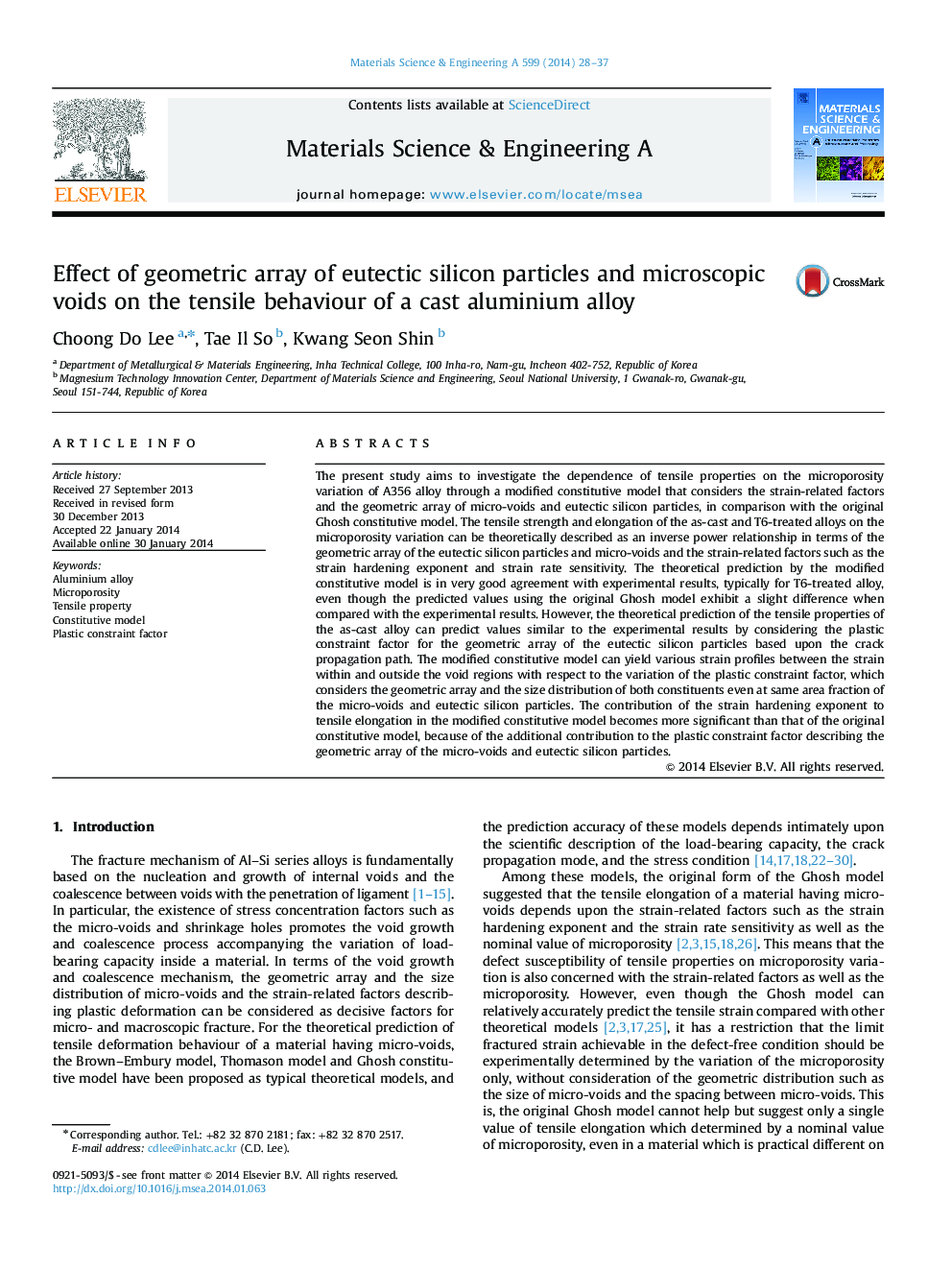| کد مقاله | کد نشریه | سال انتشار | مقاله انگلیسی | نسخه تمام متن |
|---|---|---|---|---|
| 1575391 | 1514744 | 2014 | 10 صفحه PDF | دانلود رایگان |
عنوان انگلیسی مقاله ISI
Effect of geometric array of eutectic silicon particles and microscopic voids on the tensile behaviour of a cast aluminium alloy
ترجمه فارسی عنوان
اثر آرایه هندسی از ذرات سیلیکون یوتکتیک و حفره های میکروسکوپی بر رفتار کششی یک آلیاژ آلومینیوم ریخته گری
دانلود مقاله + سفارش ترجمه
دانلود مقاله ISI انگلیسی
رایگان برای ایرانیان
کلمات کلیدی
آلیاژ آلومینیوم، میکروپوریته، اموال کششی، مدل سازمانی، عامل محدود کننده پلاستیک،
موضوعات مرتبط
مهندسی و علوم پایه
مهندسی مواد
دانش مواد (عمومی)
چکیده انگلیسی
The present study aims to investigate the dependence of tensile properties on the microporosity variation of A356 alloy through a modified constitutive model that considers the strain-related factors and the geometric array of micro-voids and eutectic silicon particles, in comparison with the original Ghosh constitutive model. The tensile strength and elongation of the as-cast and T6-treated alloys on the microporosity variation can be theoretically described as an inverse power relationship in terms of the geometric array of the eutectic silicon particles and micro-voids and the strain-related factors such as the strain hardening exponent and strain rate sensitivity. The theoretical prediction by the modified constitutive model is in very good agreement with experimental results, typically for T6-treated alloy, even though the predicted values using the original Ghosh model exhibit a slight difference when compared with the experimental results. However, the theoretical prediction of the tensile properties of the as-cast alloy can predict values similar to the experimental results by considering the plastic constraint factor for the geometric array of the eutectic silicon particles based upon the crack propagation path. The modified constitutive model can yield various strain profiles between the strain within and outside the void regions with respect to the variation of the plastic constraint factor, which considers the geometric array and the size distribution of both constituents even at same area fraction of the micro-voids and eutectic silicon particles. The contribution of the strain hardening exponent to tensile elongation in the modified constitutive model becomes more significant than that of the original constitutive model, because of the additional contribution to the plastic constraint factor describing the geometric array of the micro-voids and eutectic silicon particles.
ناشر
Database: Elsevier - ScienceDirect (ساینس دایرکت)
Journal: Materials Science and Engineering: A - Volume 599, 2 April 2014, Pages 28-37
Journal: Materials Science and Engineering: A - Volume 599, 2 April 2014, Pages 28-37
نویسندگان
Choong Do Lee, Tae Il So, Kwang Seon Shin,
